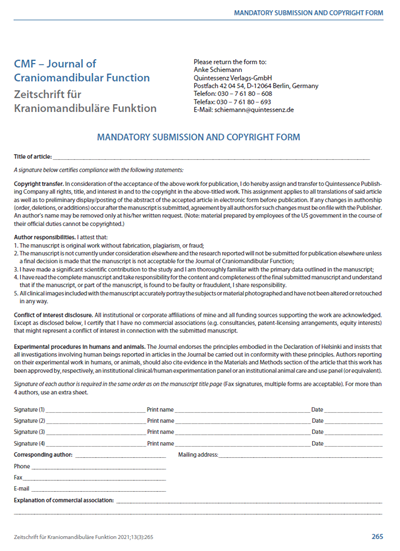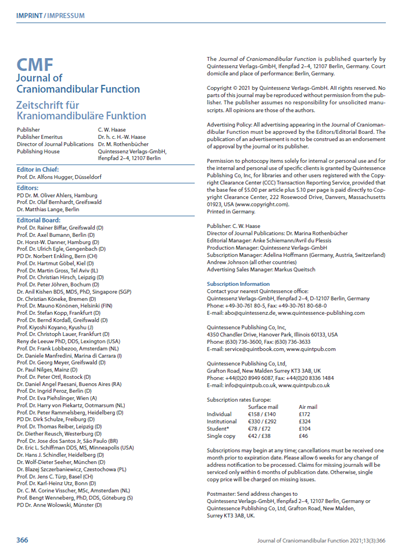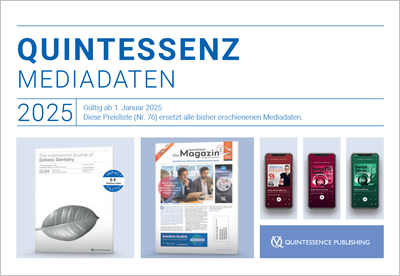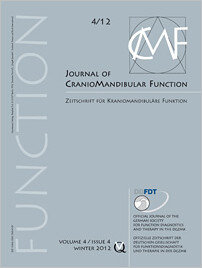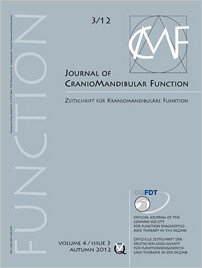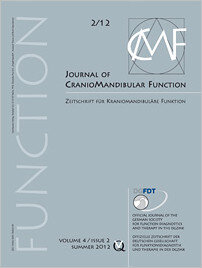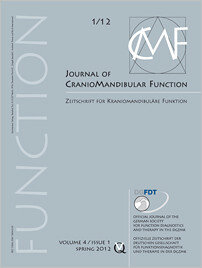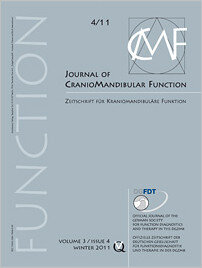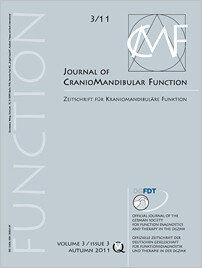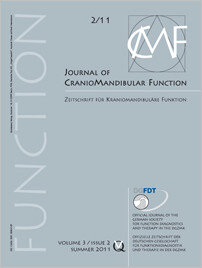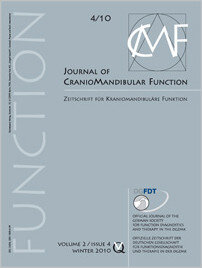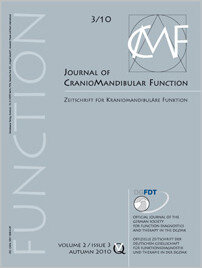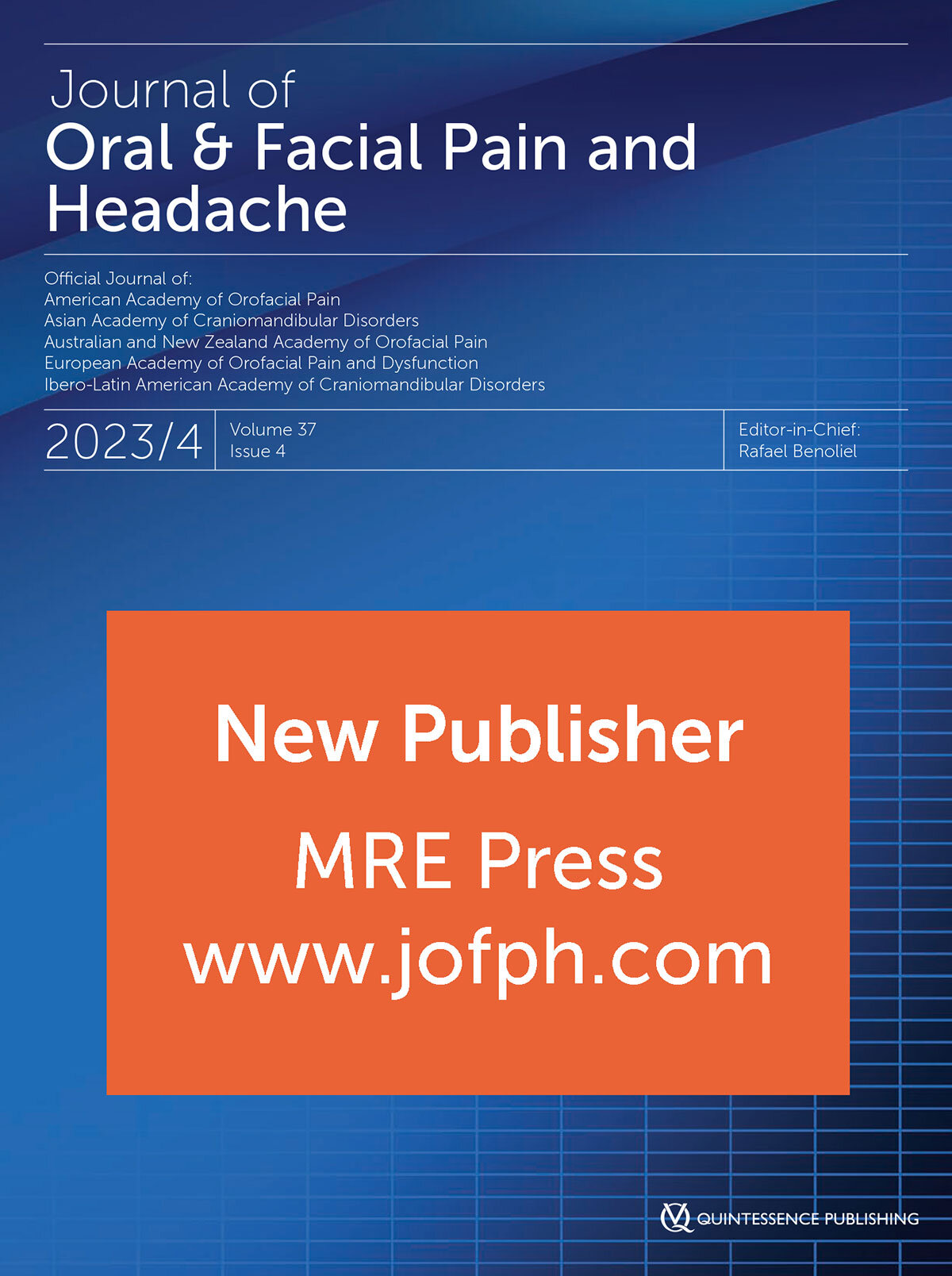Páginas 9-18, Idioma: Inglés, AlemánKling, Olaf / Rödiger, Matthias / Zhang, Shuo / Frahm, Jens / Gersdorff, NikolausFor the diagnostics of the temporomandibular joint, the dental treatment provider has a series of procedures at his/ her disposal. In addition to the recording of the case history and the clinical functional analysis, magnetic resonance imaging (MRI) plays an important part as the so-called "gold standard". To this purpose, both the osseous and the connective tissue structures are depicted in high resolution. For technical reasons, however, it was only possible to produce static images to date, although the dynamic examination of the temporomandibular joint and the use of corresponding imaging procedures during splint therapy are certainly considered advantageous. The technique presented here makes it possible to record a real-time MRI movies of arbitrary length with a frame rate of 3 images per second. This means that a dynamic depiction of the temporomandibular joint function is possible. In this article, 30 test subjects were examined clinically according to the RDC/TMD, and the temporomandibular joint movement recorded using real-time magnetic resonance imaging. The goal of this task was the comparison of the clinical examination results with those of real-time MRI in order to ascertain the potential additional value of real-time MRI with regard to diagnostic information. This resulted in Cohen's kappa values of 0.88 to 0.849. In the second examination, the study results showed a 99.95% rate of agreement. Furthermore, this resulted in a sensitivity value of 0.67 and specificity values ranging between 0.88 and 0.98. On the one hand, the results reflect the high image quality and good anatomical accessibility, and on the other hand seem to offer more valuable information for diagnostic purposes. The insights gained give the first indication that real-time MRI appears to be superior to static MRI.
Palabras clave: TMD, real-time MRI, RDC/TMD, sensitivity, specificity
Páginas 19-39, Idioma: Inglés, AlemánWeisskircher, Hans-WernerThe objective of the present retrospective study, with 154 patients between 9 and 87 years of age, was to identify the maximum masticatory forces, which had been obtained with a bilateral measuring method, and to answer the question as to whether pain influences the symmetry of masticatory forces. The patients were categorized as 'with' or 'without' pain according to their patient files. The highest total bilateral force was 1,002 N; the mean was 376 ± 176 N. The average maximum unilateral chewing forces, i.e. either right or left, were 188 ± 103 N. The total asymmetry index over the entire patient population was 24.4 ± 17.2%. The total masticatory force was not influenced significantly by pain in the maxillofacial region (P > 0.05). By contrast, pain (P = 0.01) and gender (P = 0.01) did have a significant influence on the occurrence of masticatory asymmetry. The study results permit the conclusion that an increased asymmetry index in the masticatory system must be interpreted as a motor adaptation to a nociceptive input. The study is prefaced by some remarks about the clinical relevance and the possibilities of measuring masticatory forces.
Palabras clave: Analysis of masticatory forces, masticatory asymmetry index, maxillofacial pain, TMD, UCM analysis, frequency analysis
Acceso librePáginas 41-53, Idioma: Inglés, AlemánHugger, Alfons / Hugger, Sybille / Ahlers, M. Oliver / Schindler, Hans-Jürgen / Türp, Jens C. / Kordaß, BerndExpert statement for developing Diagnostic Criteria for DysfunctionA draft of this paper was presented as an expert statement on November 16, 2012 at the DGFDT's 45th annual meeting in Bad Homburg, Germany, as part of a consensus workshop held by the Study Group for Oral Physiology and Masticatory Function. Aspects covered in the subsequent discussion were included into the present text.
Páginas 55-69, Idioma: Inglés, AlemánWetselaar, Peter / Vermaire, J. H. (Erik) / Lobbezoo, FrankThis case report describes a patient who is referred by his home physician to a centre for special dental care because of the presence of severe oral pain with an existing dental phobia. The patient has Asperger's Syndrome. Besides his extreme fear for dental treatment and several deep carious lesions, the most important clinical finding is generalized tooth wear of the dentition. In this case report, the diagnostic process is described from a multidisciplinary perspective.
Palabras clave: Asperger's Syndrome, tooth wear, multidisciplinary treatment, dental anxiety, treatment planning
Páginas 73-89, Idioma: Inglés, AlemánAhlers, M. OliverThe assessment of psychological co-factors is today an integral part of the diagnostics of craniomandibular dysfunction. Particularly in general practice, this has been difficult to implement to date. This article analyzes the causes and indicates possible solutions. The basis for this is the underlying assumption that dentists themselves assume that their patients do not expect to be asked questions on psychological co-factors in the dental practice, and for this reason may feel disconcerted and take objection to this. It can be helpful in the initial stage to pave the way towards acceptance on the part of patients regarding the investigation of corresponding co-factors via the generally accepted criterion of "stress". This can be achieved successfully by means of the questionnaire on stress factors based on the Social Readjustment Rating Scale/Life Event Scale according to Holmes and Rahe. An additional possibility is to conduct and evaluate the questionnaire Depression, Anxiety and Stress Scale (DASS). The Graded Chronic Pain Scale can be used for the assessment of chronic pain and/ or the distinction between functional and dysfunctional pain; this can be evaluated with the aid of the Chronic Pain Questionnaire with a built-in evaluation system enabling guided evaluation.
Palabras clave: craniomandibular dysfunction, stress, depression, anxiety disorder, temporomandibular disorder
Páginas 91-93, Idioma: Inglés, AlemánBernhardt, OlafPáginas 95-106, Idioma: Inglés, AlemánImhoff, BrunoReport on the 45th Annual Conference of the DGFDT, 15th - 17th November 2012, Bad Homburg von der Höhe, GermanyPáginas 107-113, Idioma: Inglés, AlemánLange, MatthiasA collection of interesting articles taken from international magazines, on the subject of functional diagnostics and treatmentIn this issue, we present interesting papers published by German scientists in international journals during 2012. They address the role of occlusion as a cause of bruxism, strategies for coping with stress in TMD, the influence of psychological factors on the occurrence of TMD, and the importance of instrumental procedures and EMG in TMD diagnostics.









